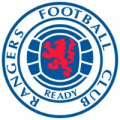The Financial Times released an article Monday saying that NASL is set to file suit against Major League Soccer and the US Soccer Federation. They claim that new changes set to be rolled out by USSF will make it impossible for them to file for Division 1 status and compete with MLS directly. They also are alleged to claim that USSF is doing this to protect MLS against any challenge NASL may pose.
The proposed changes would say that to have Division 1 status, a league will need a minimum of 16 clubs, up from the previous standard of 12 as well as 75% of clubs being based in markets of at least 2 million people, up from 1 million. Another change NASL has a grievance with is a minimum stadium size of 15,000 people. Jeffrey Kessler, representing NASL in the matter as their attorney, wrote a letter to Sunil Gulati, president of USSF and a member of FIFA's Executive Committee, which he shared with the Financial Times.
In it he calls the proposed changes monopolistic practices that could hurt future earnings for NASL. They claim that sponsors and TV broadcasters would pay more for a Division 1 NASL, regardless of actual quality relative to MLS, than a Division 2.
As Kartik Krishnaiyer pointed out, NASL currently doesn't meet the standards of Division 2 status they agreed when the league formed in 2010. Despite having four years to meet all the requirements, including having a club on the West Coast amongst other things. NASL has needed a waiver to keep their Division 2 license. The idea that they are close to meeting the current requirements for Division 1 status seems a little out of reach. The alleged changes do make it harder to apply for an upgraded status but it's not like they're in a position to make a move any time soon.
One thing that seemed out of bounds in the World Soccer Talk article is the comparison of Division 1 leagues in England and the US, especially regarding city size and stadium minimum requirements. England has a fraction of the population of this country, not to mention a very small fraction of the number of cities with millions of people in them. Making sure that top markets are involved in a Division 1 league makes a lot of sense for US Soccer. There are currently 31 metro areas with over 2 million people. MLS occupies a dozen and a half of those, or will soon. That means there is still room for a competitive Division 1 league to exist, unlike in England .
The most important part of the article is the following paragraph:
"Today, I have heard from various sources that NASL might have needed to file this lawsuit because they are finding sponsorhips and expansion opportunities to be limited. USL, which is still a D3 but has announced plans to seek D2 status, has been able to expand rapidly into many second-tier markets the NASL could have added if they were interested in staying at that level in the pyramid. I have also heard that NASL owners are largely split on the future course, with some wanting to focus on entertainment and marketing opportunities in their local markets while others want to see the league built out across the continent in a manner that makes it a major league."
If NASL ownership isn't as united in this cause, it could end the suit before it even has the chance to get off the ground. The reasons for their difficulty in finding proper sponsorships are too numerous to list here. The fact that USL is ready to make the jump up the ladder, with the needed sponsor support one would assume, does narrow it down to a few possibilities. Certainly the link between MLS and USL raises a few eyebrows and possibilities.
If NASL does carry out this lawsuit, it's almost certain they'll lose. Either the courts will do so or FIFA could step in. They do not like it when leagues can't play nicely together and even more so when courts outside FIFA's control try to decide anything. While FIFA stepping in would look really bad, considering it is the American Department of Justice that is prosecuting their executives. Considering the ego there, it's not impossible to imagine them pushing hard for order to be restored.
Whatever the outcome of this case, it's likely to mean huge changes for the soccer pyramid.










































